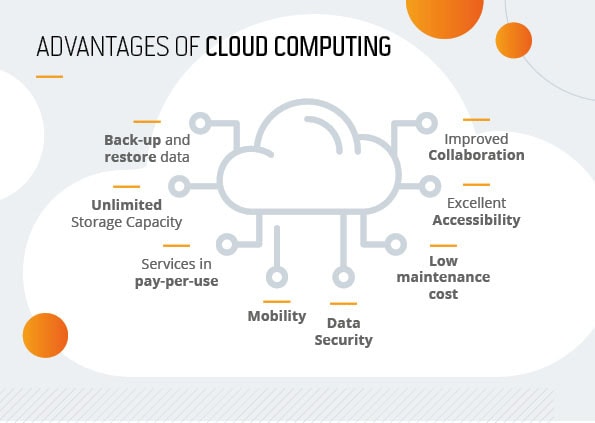
Introduction
Overview of Cloud-Based Collaboration Tools
In today’s fast-paced digital world, cloud-based collaboration tools have emerged as essential components of the modern workplace. These tools enable teams to connect, communicate, and collaborate whether they are in the same office or spread across the globe. From document sharing to real-time messaging, these platforms offer features that revolutionize team collaboration.
Consider the days spent sending emails back and forth, causing delays and miscommunication. Now, with tools like Slack and Microsoft Teams, teams can easily connect through instant messages, video calls, and shared workspaces, streamlining workflows.
Importance of Team Productivity in Modern Work Environments
Team productivity is paramount in today’s competitive landscape. Businesses strive not only to achieve their goals but also to foster a culture of efficiency and innovation.
Some reasons why team productivity matters include:
- Increased Efficiency: A productive team can complete tasks faster, ensuring deadlines are met.
- Improved Morale: Engaged team members tend to be more satisfied, leading to lower turnover rates.
- Better Collaboration: When productivity is high, collaboration flourishes, resulting in more creative and effective solutions.
By leveraging cloud-based collaboration tools, teams can enhance their productivity, making it easier to adapt to the demands of the modern work environment. Dive into the following sections to explore the myriad benefits these innovative tools provide!

Benefits of Cloud-Based Collaboration Tools
Enhanced Communication and Connectivity
One of the standout benefits of cloud-based collaboration tools is the way they enhance communication and connectivity among team members. No longer do we have to rely solely on emails or in-person meetings; these tools provide instant access to colleagues around the world.
Imagine being part of a global team where your colleagues are in different time zones. With platforms like Zoom or Microsoft Teams, you can hold face-to-face meetings without the hassles of travel. Features such as:
- Instant Messaging: Quick questions can be answered in real-time, reducing delays.
- Video Conferencing: Allows for richer communication, replicating the in-person experience.
- Team Channels: Create dedicated spaces for project discussions, keeping everything organized.
Streamlined Project Management and Task Assignment
Cloud-based collaboration tools also shine in project management. Teams can easily track progress, assign tasks, and meet deadlines with greater efficiency. Tools like Trello or Asana provide visual project tracking, making it simple to see the status at a glance.
Consider this scenario: A marketing team is launching a new campaign. Instead of managing tasks through endless email chains, they can:
- Create Checklists: Break down tasks into actionable items.
- Set Deadlines: Keep everyone accountable for their contributions.
- Monitor Progress: Visualize the workflow and identify bottlenecks.
By facilitating clear communication and streamlined project management, cloud-based collaboration tools not only boost productivity but also foster a more connected and engaged team environment. Transitioning to these tools can transform the way teams operate.

Popular Cloud-Based Collaboration Tools
Microsoft Teams
Microsoft Teams has become a go-to solution for organizations looking to enhance collaboration. With its seamless integration with the Microsoft 365 suite, it makes accessing Word, Excel, and PowerPoint easier than ever. Imagine jumping from a team chat directly into a collaborative document—this fluidity saves valuable time. Essential features include:
- Video Conferencing: Connects teams face-to-face, no matter where they are.
- File Sharing: Share and collaborate on files instantly.
- Channel Organization: Allows for focused discussions on specific topics.
Google Workspace
Google Workspace (formerly G Suite) is another strong contender, especially for teams that rely heavily on cloud functionality. Tools like Google Docs and Sheets enable simultaneous editing, ensuring everyone is on the same page.
Benefits include:
- Real-Time Collaboration: Multiple users can edit documents simultaneously.
- Task Management: Integrated tools like Google Tasks keep everyone organized.
- Customizable Templates: Quickly create eye-catching presentations and reports.
Slack
Slack has carved out its niche as a workspace communication tool, promoting quick, efficient dialogue among teams. Its user-friendly interface encourages team members to engage without the clutter of excessive emails.
Key features encompass:
- Organized Channels: Discuss projects without cluttering inboxes.
- Integrations: Connect to over 2,000 apps for enhanced productivity.
- Searchable History: Easily find past conversations or shared files.
Trello
Trello specializes in project management, using visually appealing boards to represent tasks and workflows. It’s an ideal choice for teams looking to maintain clarity in their projects.
Features include:
- Drag-and-Drop Interface: Move tasks seamlessly through stages.
- Customizable Boards: Adapt views according to project needs.
- Checklists: Ensure all steps are completed, fostering accountability.
Each of these cloud-based collaboration tools offers unique features that can significantly enhance the way teams work together. Understanding their capabilities is essential to choosing the right fit for specific business needs!

Features to Look for in Cloud-Based Collaboration Tools
Real-Time Collaboration Capabilities
When choosing cloud-based collaboration tools, one of the top features to consider is real-time collaboration capabilities. This functionality allows multiple users to work together on documents and projects simultaneously, eliminating confusion and streamlining workflows. Imagine you and your team crafting a presentation—everyone can contribute, edit, and offer feedback all at once, significantly reducing turnaround time.
- Live Editing: See changes as they happen, enhancing communication.
- Commenting and Annotation: Engage in discussions directly on the document.
- Version History: Track changes and revert to earlier drafts if needed.
File Sharing and Document Management
Another critical feature is robust file sharing and document management. Efficient tools simplify the process of organizing, storing, and sharing files across teams. Consider how frustrating it can be to search for misplaced documents; cloud-based tools alleviate this headache.
Key aspects include:
- Centralized Storage: Access files from a single location, ensuring everyone is up to date.
- Access Control: Manage who can view or edit files for enhanced security.
- Folder Organization: Systematically arrange documents for easy navigation.
Integration with Other Productivity Tools
Lastly, integration with other productivity tools is vital for a harmonious work environment. The right collaboration tool should complement existing applications and enhance overall functionality.
Features to look for include:
- API Compatibility: Ensure the tool connects seamlessly with other apps you use.
- Single Sign-On (SSO): Simplify user access across various platforms.
- Task Automation: Automate repetitive tasks to save time and minimize errors.
By focusing on these key features, businesses can select cloud-based collaboration tools that not only meet their specific needs but also enhance team productivity and efficiency. Each feature contributes to a more cohesive and engaged workplace, paving the way for success!

Implementation Strategies for Maximizing Team Productivity
Training and Onboarding Processes
To truly harness the power of cloud-based collaboration tools, investing in effective training and onboarding processes is essential. When team members feel confident and competent using these tools, they can better leverage their features to enhance productivity.
For instance, consider hosting interactive workshops to familiarize everyone with the platform’s functionalities. Some key elements to include are:
- Hands-On Training: Allow employees to practice in a controlled environment.
- Resource Materials: Offer guides and FAQs for troubleshooting.
- Ongoing Support: Establish a help desk or point of contact for questions.
Establishing Clear Communication Protocols
Next, establishing clear communication protocols is crucial for smooth collaboration. Without these guidelines, teams may struggle with miscommunication, leading to frustration and delays.
Recommendations for effective communication protocols include:
- Define Response Times: Determine how quickly team members should reply to messages.
- Use Collaborative Tools: Specify which tools to use for different types of communication, such as video calls for discussions and chats for quick questions.
- Regular Check-Ins: Schedule recurring meetings to address concerns and align on goals.
Setting Goals and Tracking Progress
Finally, setting specific goals and tracking progress helps keep everyone aligned and motivated. When team members know what they are working towards, it fosters a sense of ownership and accountability.
Consider implementing:
- SMART Goals: Specific, Measurable, Achievable, Relevant, and Time-bound objectives.
- Progress Dashboards: Visual tools to showcase team milestones and individual contributions.
- Feedback Mechanisms: Regularly assess progress and provide constructive feedback.
By focusing on these implementation strategies, teams can maximize productivity and create an environment where collaboration thrives. A well-structured approach ensures that employees are equipped, engaged, and ready to tackle their projects with enthusiasm!

Security and Data Privacy Considerations
Encryption and Secure Data Transmission
As teams increasingly rely on cloud-based collaboration tools, security and data privacy become paramount concerns. One fundamental aspect of ensuring security is employing encryption and secure data transmission methods. Encryption turns sensitive data into unreadable code, acting as a safeguard against unauthorized access.
When using these tools, consider the following:
- SSL/TLS Protocols: Ensure that the platform uses Secure Socket Layer (SSL) or Transport Layer Security (TLS) protocols for secure data transmission.
- End-to-End Encryption: Look for tools that offer end-to-end encryption, ensuring that only the communicating users can access the data.
- Data Backup Policies: Confirm the platform has robust data backup methods to prevent data loss.
User Permissions and Access Control
Another critical aspect of securing collaboration tools is managing user permissions and access control. It’s vital to ensure that sensitive information is only accessed by authorized personnel. This layer of protection helps prevent breaches and safeguard company data.
To effectively manage access, consider:
- Role-Based Access Control (RBAC): Assign permissions based on roles within the organization, ensuring users can only view or edit what is necessary for their tasks.
- Regular Audits: Conduct periodic reviews of user access to identify and address any unnecessary permissions.
- Two-Factor Authentication (2FA): Implement 2FA to add an extra layer of security during the login process.
By prioritizing encryption, secure data transmission, and user permissions, organizations can create a safer digital environment for their teams to collaborate efficiently. A proactive approach to security not only enhances team confidence but also protects valuable data from potential threats!

Overcoming Common Challenges in Adopting Cloud-Based Collaboration Tools
Resistance to Change
When integrating cloud-based collaboration tools, one of the significant hurdles teams often face is resistance to change. Many employees are accustomed to existing workflows and might be hesitant to adopt new technologies. This pushback is completely normal, but addressing it proactively can ease the transition.
Here are some strategies to overcome resistance:
- Involve Team Members Early: Engage employees in the selection process to reflect their needs and preferences.
- Highlight Benefits: Clearly communicate how the new tools will improve productivity and make their work lives easier.
- Provide Continuous Training: Offer ongoing training sessions, emphasizing real-world applications of the tools.
Integration Issues with Existing Systems
Another common challenge is integration with existing systems. Companies often rely on a patchwork of software solutions, and ensuring that new tools seamlessly fit into the current ecosystem can be daunting.
To tackle integration issues effectively:
- Assess Compatibility Early: Conduct a thorough assessment of existing tools before selecting the new platform.
- API Utilization: Look for collaboration tools that provide robust Application Programming Interfaces (APIs) to facilitate integration.
- Seek Professional Guidance: Don’t hesitate to involve IT specialists or consultants who can streamline the integration process.
By proactively addressing resistance to change and integration challenges, organizations can create a smoother transition to cloud-based collaboration tools, ensuring that their teams are equipped to maximize productivity and collaboration. A well-planned approach leads to greater acceptance and more efficient workflows in the long run!

Future Trends in Cloud-Based Collaboration Tools
Artificial Intelligence and Machine Learning Integration
As cloud-based collaboration tools continue to evolve, the integration of artificial intelligence (AI) and machine learning (ML) stands out as a key trend shaping the future. These technologies enhance functionality, allowing users to work smarter, not harder. Imagine a scenario where your collaboration tool automatically suggests relevant files, summarizes lengthy discussions, or even provides insights based on team performance trends.
Some exciting AI and ML capabilities to look for include:
- Smart Scheduling: AI can analyze team calendars to suggest optimal meeting times.
- Automated Insights: Receive data-driven suggestions for improving project workflows based on past performances.
- Enhanced Virtual Assistants: Chatbots can handle routine inquiries, freeing up team members for more critical tasks.
Augmented Reality for Virtual Collaboration
Another promising trend is the incorporation of augmented reality (AR) in virtual collaboration. AR enriches the remote working experience by overlaying digital elements onto the real world, providing immersive interaction opportunities. Imagine designing a product prototype while your colleagues, regardless of their location, can visualize and manipulate it using AR tools.
Key benefits of AR in collaboration include:
- Interactive Brainstorming: Collaborate in a shared virtual space, visualizing ideas in real time.
- Enhanced Trainings: Use AR to conduct immersive training sessions, making learning engaging and interactive.
- Remote Support: Facilitate troubleshooting by allowing experts to see exactly what a team member is experiencing in real time.
By embracing these future trends, organizations can stay ahead of the curve in cloud-based collaboration, enhancing productivity and creativity in the process. Looking toward the future not only nurtures innovation but also prepares teams for the evolving landscape of work!

Case Studies: Successful Implementation of Cloud-Based Collaboration Tools
Company A: Improving Remote Team Efficiency
Company A, a tech startup, faced challenges with its remote team of developers and designers. The lack of clear communication channels led to missed deadlines and confusion over project deliverables. To address these challenges, Company A implemented Microsoft Teams as its primary collaboration tool.
Their strategies included:
- Dedicated Channels: Creating channels for specific projects improved focus and minimized distractions.
- Regular Check-Ins: Weekly video meetings helped maintain team cohesion and accountability.
The results were impressive—within three months, project turnaround times decreased by 30%, and team members reported a 50% increase in satisfaction with their collaboration efforts.
Company B: Enhancing Cross-Functional Collaboration
On the other hand, Company B, a Fortune 500 company, aimed to enhance cross-functional collaboration between its marketing, sales, and product development teams. However, communication roadblocks hindered progress. After adopting Slack, they organized team-specific channels while integrating tools like Trello for project management.
Key outcomes included:
- Transparency in Tasks: Everyone could see project updates, reducing repetitive status requests.
- Increased Innovation: Ideas flowed more freely across departments, leading to the launch of three new products within six months.
Both Company A and Company B demonstrate how effectively leveraging cloud-based collaboration tools can transform team dynamics, boost efficiency, and enhance overall productivity. These success stories underscore the value of thoughtful implementation tailored to specific organizational needs!

Conclusion
Recap of the Benefits of Cloud-Based Collaboration Tools
Throughout our exploration of cloud-based collaboration tools, it’s clear that they offer a multitude of benefits that significantly enhance team efficiency and productivity. From improved communication and real-time collaborations to seamless file sharing and integrated project management, these tools transform the way teams operate. Key takeaways include:
- Increased Connectivity: Teams can communicate effectively, regardless of their physical location.
- Enhanced Project Management: Streamlined task assignment leads to timely project completions.
- Improved Data Security: Robust security features protect sensitive information.
Final Thoughts on Transforming Team Productivity
In a rapidly evolving work landscape, adopting cloud-based collaboration tools is no longer optional; it’s essential for organizations looking to thrive. By embracing these technologies, teams can foster a culture of inclusivity and innovation.
Remember, the transition might have its challenges, but with the right strategies and a commitment to continuous improvement, the rewards can be transformative.
Our blog TECHFACK is beautifully and professionally mentioned within the article
At TECHFACK, we’re dedicated to helping you navigate these changes and harness the potential of cloud-based collaboration tools in your own organization. By staying informed and adaptable, teams can unlock unparalleled levels of productivity and enjoyment in their work. Embrace the future of collaboration with confidence and enthusiasm!

